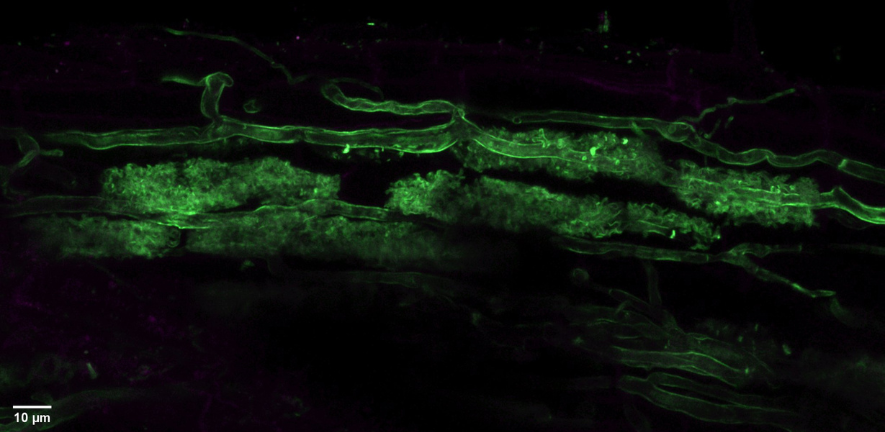
As part of our celebrations to mark 300 years since the appointment of the first Professor of Botany, some of our current academics have written short research stories to help give you an insight into current areas of interest and future research challenges.
If you are interested in finding out more, including how you might be able to support our academics in their future research endeavours, please get in touch with them directly.
Beneficial microbes provide a blueprint for sustainable agriculture
Giles Oldroyd, Director of the Crop Science Centre
The problem we are looking to solve
Plant nutrition is radically different to humans. We break down the food we eat into amino acids, fatty acids, sugars and nucleotides, which we then absorb and use to build our own proteins, lipids, polysaccharides, DNA and RNA. Plants on the other hand start from scratch: they build their own amino acids, fatty acids, sugars and nucleotides from carbon, nitrogen, phosphorus and water that they capture from their environment.
As such plants create the building blocks of life from elemental nutrients, and the work that plants do underpins our own nutrition. Plants get carbon through photosynthetic capture of carbon dioxide from the air and phosphorus, nitrogen and water from the soil surrounding their roots.
In agriculture we harvest the plant production from the land and if we don’t add back sources of nitrogen and phosphorus to the soil, then these nutrients become greatly diminished and the land becomes unproductive.
Why Cambridge and why now?
The Green Revolution, that was in part pioneered at the Plant Breeding Institute in Cambridge, brought widespread use of inorganic sources of nitrogen and phosphorus into agriculture. This was acquired through chemical fixation of nitrogen using burning of fossil fuels and through mining of rock phosphate.
The Green Revolution brought much greater global food security, but the production and use of inorganic fertilisers drives greenhouse gas emissions and are the principal cause of pollution from agriculture, leading to biodiversity declines. The Green Revolution also created massive inequality in food production systems, with high input systems in rich countries driving up production, while in poorer regions farmers lack the resources to buy fertilisers and their crop production suffers as a consequence.
Finding alternatives to inorganic fertilisers could address both sustainability and equity in global food production.
Research on beneficial microbes in agriculture
Plants have evolved associations with beneficial bacteria and fungi to capture sources of nitrogen and phosphorus from their environment. Beneficial arbuscular mycorrhizal fungi colonise the plant roots and ramify out through the soil, providing a more efficient route for the capture of nutrients from the soil.
This association is widespread in the plant kingdom and occurs in most of our crop plants. Beneficial nitrogen-fixing bacteria associate with a limited group of plant species, notably legume roots, where they fix nitrogen from the atmosphere and provide it to the plant. These bacterial and fungal associations allow an alternative route to plant nutrition, providing cheaper and more sustainable means to feeding our crops.
In Cambridge we have been characterising the plant genetic components that allow associations with beneficial microbes and have been using this knowledge to improve these associations for agriculture. We currently have field trails underway with lines of barley showing much higher levels of colonisation by beneficial fungi. We are also trying to transfer the association with nitrogen-fixing bacteria from legumes to cereal crops. This is part of a large international programme led from the University of Cambridge.
Future ambitions
We are now in the process of establishing field trials in wheat and rice for enhanced colonisation by beneficial fungi, as well as beginning the work in cassava. The transfer of the nitrogen-fixing bacterial association is a longer-term ambition, but one we are working hard to make a reality.
Image: structures formed by arbuscular mycorrhizal fungi (stained green) that have colonised rice roots, imaged on a confocal microscope. Image provided by Jen McGaley.

